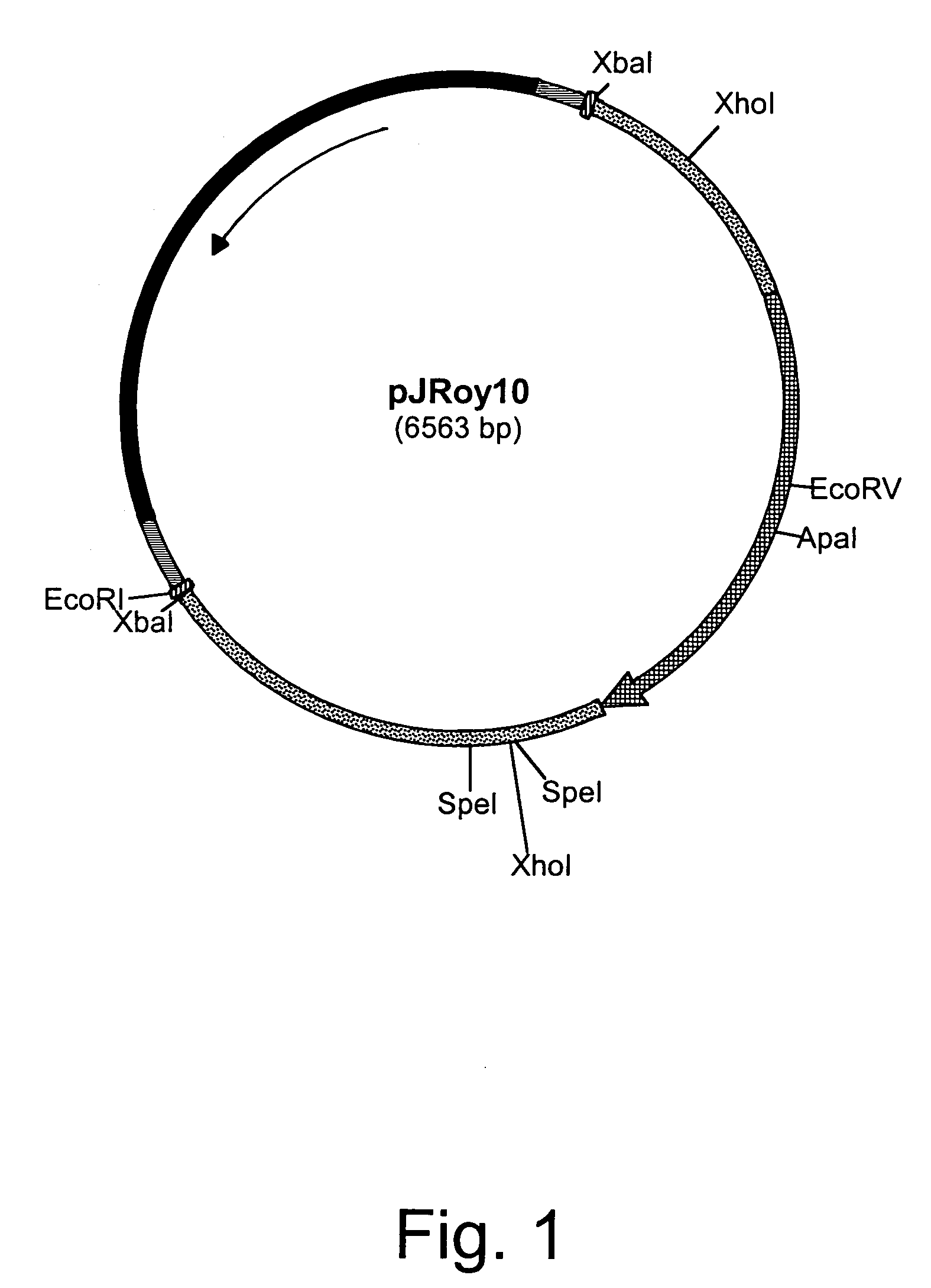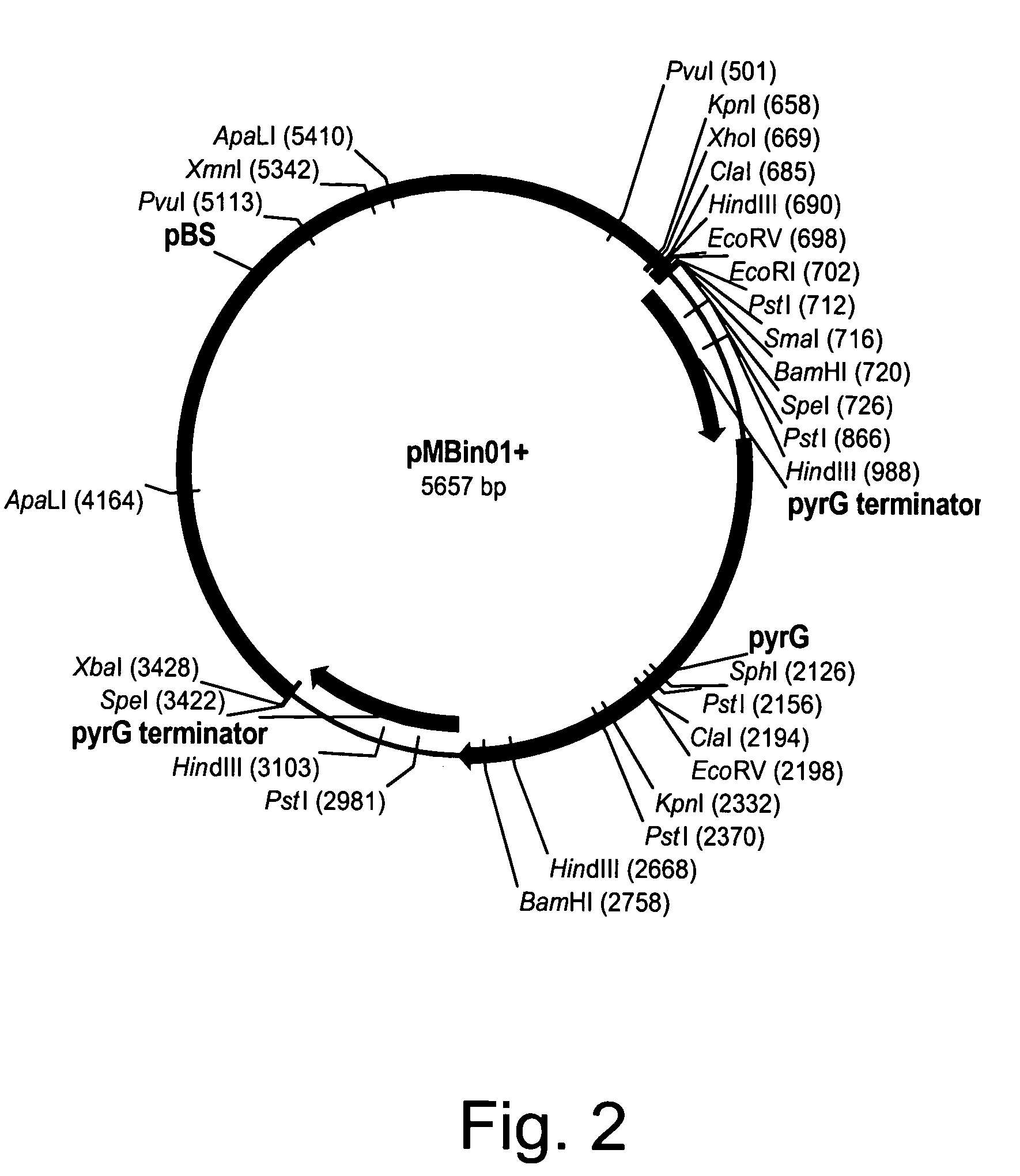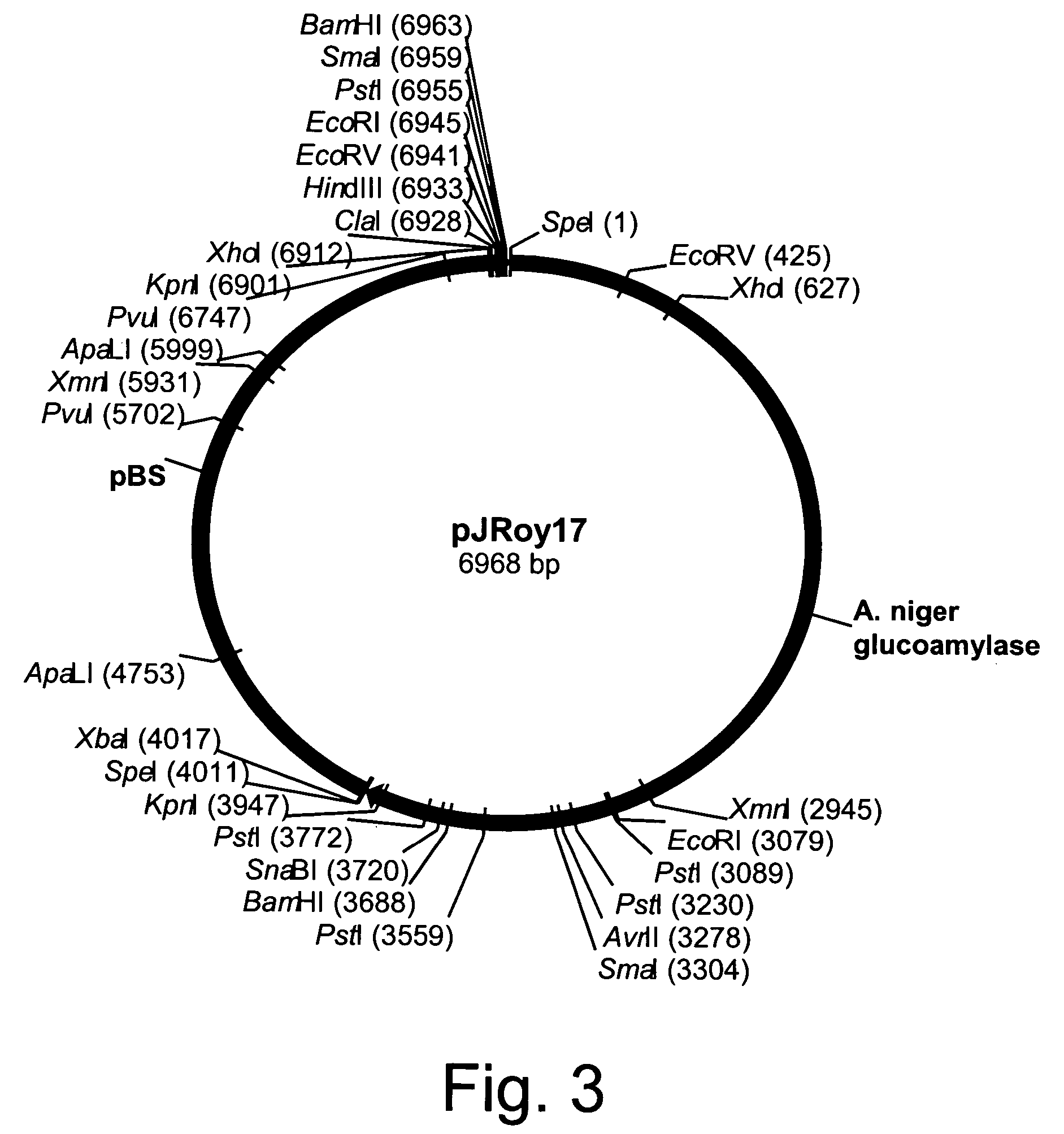Methods for producing biological substances in enzyme-deficient mutants of Aspergillus
a technology of aspergillus and mutants, which is applied in the field of producing heterologous biological substances in enzyme-deficient aspergillus niger mutant strains, can solve the problems that niger /i>hosts with the desirable traits of increased protein expression and secretion may not necessarily have the most desirable characteristics for successful fermentation, and may not be optimal for fermentation, etc., to achieve stable alpha-amylase activity and simplify downstream processing of heterologous biological substances
- Summary
- Abstract
- Description
- Claims
- Application Information
AI Technical Summary
Benefits of technology
Problems solved by technology
Method used
Image
Examples
example 1
Transformation Procedure
[0145]Twenty micrograms of each of the disruption cassettes described in the following Examples were digested with a restriction enzyme and the fragment to be used for disruption was excised and purified from a 1% agarose-50 mM Tris base-50 mM borate-0.1 mM disodium EDTA buffer (TBE) gel using a QIAEX II Gel Extraction Kit (QIAGEN, Inc., Chatsworth, Calif.). The total volume was brought to 20 μl in sterile glass distilled water and split between four transformations.
[0146]Protoplasts were prepared using the following protocol. Shake flasks containing 20 ml of YP medium supplemented with 5% glucose were inoculated with Aspergillus niger conidia at a density of ca. 106-108 per ml. Following an overnight (15-17 hours) incubation at 34° C. (200 rpm), the mycelia were collected by filtration with sterile Miracloth™ (Calbiochem, San Diego, Calif.) and transferred to a solution of 3-5 mg of Novozym™ 234 per ml in 10-20 ml of 1.2 M sorbitol (Aspergillus niger strains...
example 2
Southern Analysis
[0149]Aspergillus niger mycelia were harvested from 15 mm plates containing 5 ml of YP medium supplemented with 5% glucose (and 10 mM uridine when applicable), filtered and rinsed with 10 mM Tris pH 7.4-0.1 mM EDTA pH 8 (TE) using a sidearm flask and porcelain filter, and finally placed in a microfuge tube to dry for 1 hour under a speed vacuum.
[0150]DNA was isolated using a Qiagen DNeasy Plant Mini Kit (QIAGEN, Inc., Chatsworth, Calif.). Five micrograms of the isolated DNA was digested for two hours (40 μl total volume, 4 U of specified restriction endonuclease / μl DNA) and electrophoresed on a 1% agarose gel using TBE buffer. The DNA was fragmented in the gel by treating with 0.25 M HCl, denatured with 1.5 M NaCl-0.5 M NaOH, and neutralized with 1.5 M NaCl-1 M Tris, pH 8, and then transferred in 20×SSC to a MSI MagnaGraph nylon transfer membrane (Micron Separations, Inc., Westborough, Mass.). The DNA was UV crosslinked to the membrane and prehybridized for 1 hour a...
example 3
Construction of Aspergillus Niger Genomic Lambda Library
[0152]Aspergillus niger Bo-1 DNA was isolated by lysis in guanidine hydrochloride according to the procedure of Wahleithner et al., 1996, Current Genetics. 29: 395-403, followed by purification on a Qiagen Maxiprep column (QIAGEN, Inc., Chatsworth, Calif.) as described by manufacturer. A genomic library of Aspergillus niger Bo-1 was created in EMBL4 (Clonetech, Palo Alto, Calif.) according to the manufacturer's instructions. Aspergillus niger Bo-1 genomic DNA was partially digested with Sau3A. After digestion, the DNA was electrophoresed on a preparative low-melting-point agarose gel, and the region containing 8 to 23-kb DNA was sliced from the gel. The DNA was extracted from the gel with beta-agarase (New England Biolabs, Waltham, Mass.). The isolated DNA was ligated with EMBL4 arms (Clonetech, Palo Alto, Calif.) as described in the supplier's directions. The ligation was packaged in vitro with a Gigapack Gold 11 Packaging Kit...
PUM
| Property | Measurement | Unit |
|---|---|---|
| Fraction | aaaaa | aaaaa |
| Antimicrobial properties | aaaaa | aaaaa |
| Strain point | aaaaa | aaaaa |
Abstract
Description
Claims
Application Information
 Login to View More
Login to View More - R&D
- Intellectual Property
- Life Sciences
- Materials
- Tech Scout
- Unparalleled Data Quality
- Higher Quality Content
- 60% Fewer Hallucinations
Browse by: Latest US Patents, China's latest patents, Technical Efficacy Thesaurus, Application Domain, Technology Topic, Popular Technical Reports.
© 2025 PatSnap. All rights reserved.Legal|Privacy policy|Modern Slavery Act Transparency Statement|Sitemap|About US| Contact US: help@patsnap.com



